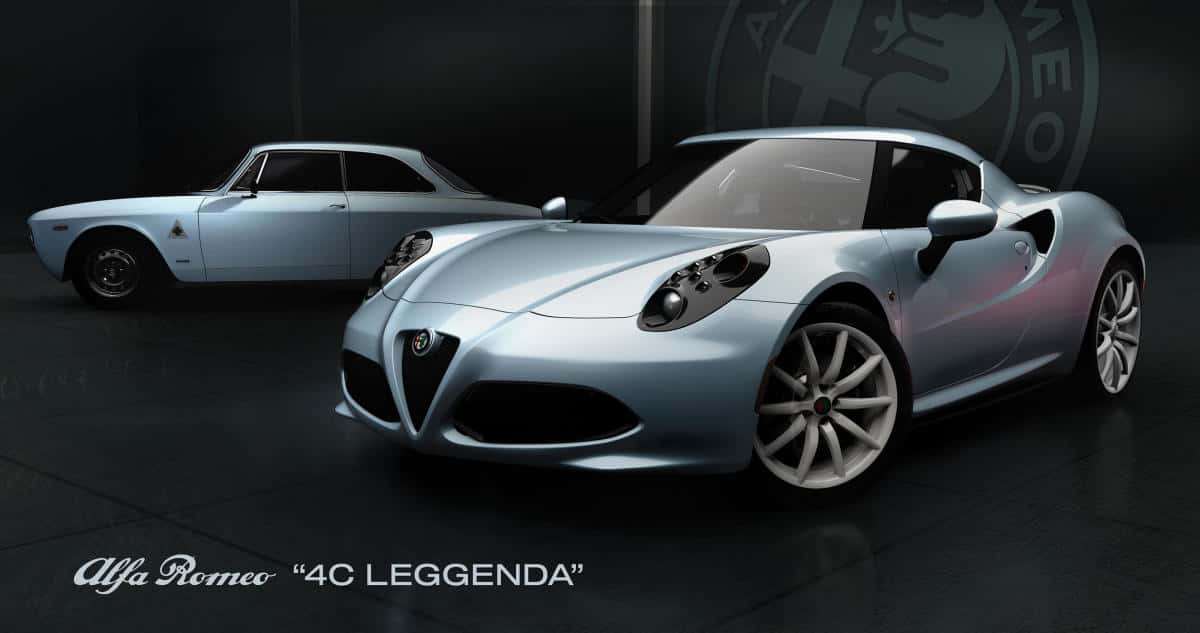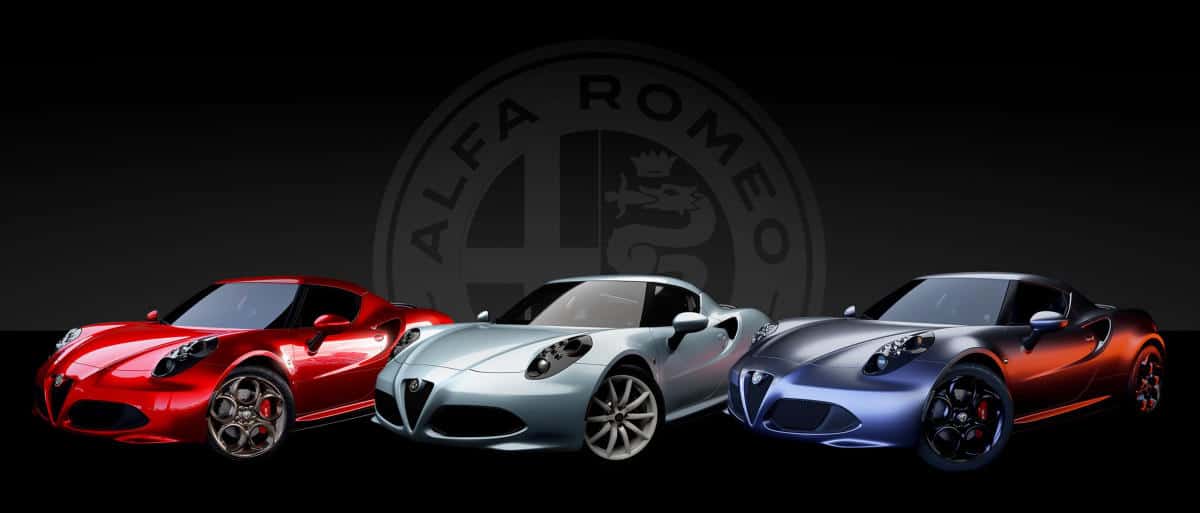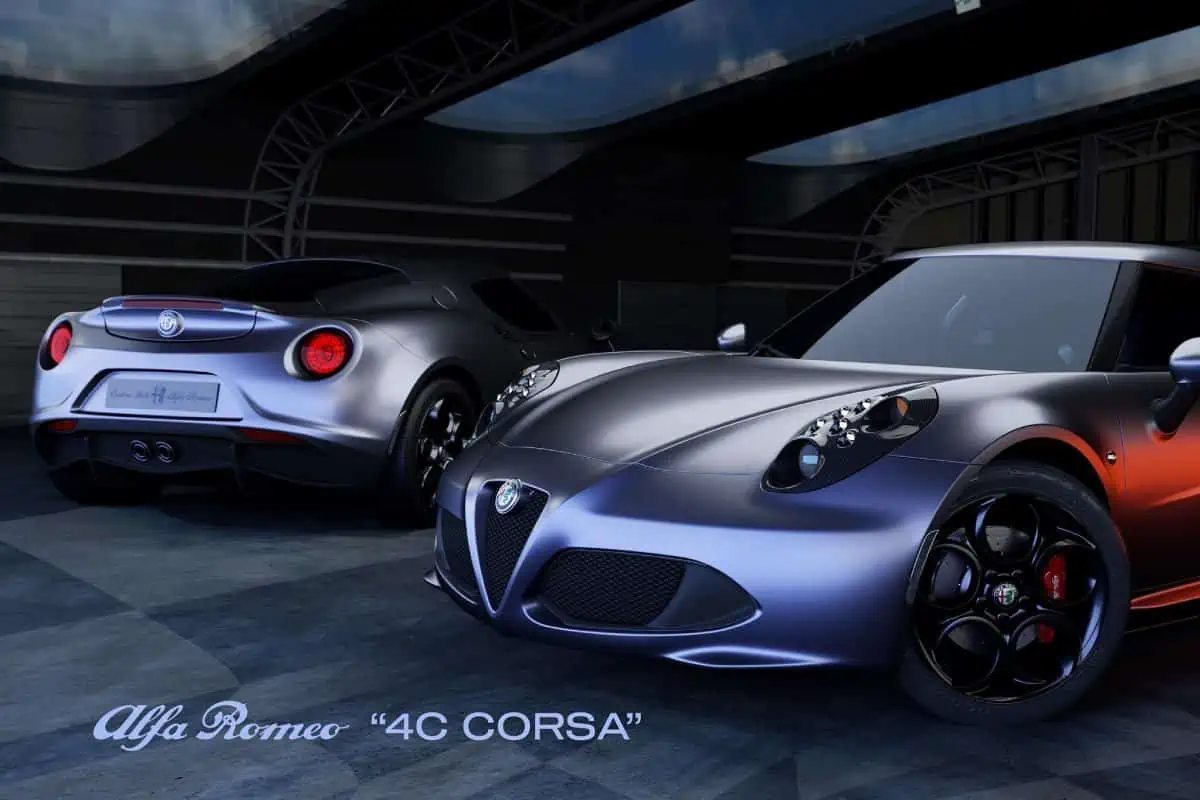Ten years after its creation, the compact 4C supercar is back to amaze its fans and reaffirm the visceral bond between the Alfa Romeo community and the brand which has been a symbol of Italian sporty driving since 1910. With a bold and aerodynamic design inspired by Alfa Romeo icons of the past, the 4C is a sporty vehicle with two bucket seats, rear-wheel drive, and a centrally placed engine which was produced in both a coupé and spider version until 2020.
To celebrate the 10th anniversary of this sporty coupé, Stellantis’ Heritage department (Alfa Romeo, Fiat, Lancia and Abarth) has created and developed the “Alfa Romeo 4C Designer’s Cut” project which will produce a single model which has been customized by Alessandro Maccolini, the Alfa Romeo Design Project Manager. A contemporary interpretation of an “instant classic” which still makes Alfa Romeo fans’ hearts skip a beat, the special commemorative version will be sold as an authentic collector’s item.
The initiative will be presented today in a video-interview filmed at the Heritage Hub. It features the Alfa Romeo designer Maccolini, who at the time was the head of design for the 4C, and Alessandro Ravera, the Heritage Special Vehicles Operation manager, speaking about the genesis of this model which brought the Italian brand to the USA. The thrilling story is recounted through images and memories and continues with the project’s details and an invitation to the Alfa Romeo tribe—as well to any other fan—to express their opinions on the Heritage communication channels (Facebook, Instagram, Youtube).



Three aesthetic arenas for a collector’s item
“To make this one-off based on the 4C, I have identified three aesthetic features to take inspiration from,” Maccolini explains. “I already have an idea of what I want to develop, but I also want to draw on the brand’s fans. Over the years I had some first-hand experience with Alfa Romeo clubs and I had the opportunity to see many versions of the 4C, with various types of paint jobs and some finely tuned configurations. That’s why I would like to get the fans involved in this project as well and celebrate the 10th anniversary of the 4C together in a truly special one-off.”
In particular, the first look, the “4C Tributo”, is more traditional and based on the color red—the color which is most identified with Alfa Romeo vehicles, as it represents the brand’s specific meaning of premium sportiness and is a genuine archetype which has become part of the collective imagination. Meanwhile, the second look derives from the racing world: “4C Corsa” features a matte gray livery which highlights the vehicle’s muscular forms and simultaneously enhances the vehicle’s technical characteristics devoted to performance. Lastly, “4C leggenda” is the last and most intimate look from Alfa Romeo as it combines sportiness to the Biscione’s history, as can be seen in the pastel colors of the past, including a sophisticated blue paired with technical white alloy rims.
Prices through the roof for an authentic “instant classic”
The Alfa Romeo 4C is such a great example of an “instant classic” on the market which, just ten years from its release, has already become a collector’s item whose value is constantly rising. A well-preserved model can reach up to double the price from 2013. According to Maccolini, this is taking place for various reasons: “The transition to electric vehicles underway has attracted people to internal combustion engines, to a pure vehicle, and they want to hold on to a memory from this period. The 4C is truly an Instant Classic whose attractiveness lies in its being an extremely natural car in both style and proportions. Today it still has both an easily recognizable look, with some call backs to key elements from the 8C Competizione, and top-of-the-line technological features which still make it the only vehicle from this segment to have a central monocoque in carbon fiber. All of this has created buzz around the 4C, as can be seen in the many clubs around the world which are dedicated to this ‘democratic supercar’, as it was dubbed at its launch thanks to its modest cost in comparison with the numerous and high-quality features it offered.”
The project is an integral part of the Reloaded by Creators program
The Alfa Romeo 4C Designer’s Cut is the continuation of a journey, which began last year with the Abarth Classiche 1000 SP, with the Roberto Giolito-led team of Heritage Stellantis (Alfa Romeo, Fiat, Lancia, Abarth) creating one-off or few-offs based on discontinued cars. This activity is part of Heritage’s “Reloaded by Creators” program. Launched in 2018, it involves the sale of a limited number of classic Alfa Romeo, Fiat, Lancia, and Abarth vehicles: historical models with certified authenticities which have been restored to their original beauty directly by the parent company. The timeless appeal of every car is restored with the care, know-how, and passion of the team of experts in the Classic Workshops. From the meticulous scouting of the identification phase, to the restoration, the assessment, and the placement on the market, this “complete cycle” takes both economic and cultural value into consideration. Preserving heritage does not simply mean conserving it, but renewing it.
Alfa Romeo 4C, a masterpiece of Italian design and technology
The history of the Alfa Romeo 4C began with the concept car introduced at the Geneva Motor Show in 2011. It received rave reviews and created lots of buzz among sports car fans. Following this enthusiastic reaction, Alfa Romeo decided to launch production on this coupé in 2013 which was to embody the brand’s sporty core: performance, Italian style, and technical excellence aimed at the most enjoyable driving experience in complete safety.
Designed by the Centro Stile Alfa Romeo, the 4C supercar immediately recalled some iconic models which had left an important mark on the brand’s history. Above all, due to its size and layout, it brought the 33 Stradale to mind—a vehicle combining extreme mechanical and functional requirements with a minimalist style which adequately “dressed” the engine and the body in unforgettable Alfa Romeo treatments. “The 4C was definitely inspired aesthetically by the 33 Stradale,” Maccolini stated. “However, from the chassis’ point of view, it is more similar to the Scarabeo, a two-seater with a transversal rear engine and extremely unique body.” The 4C completed a journey which was embarked upon with the 8C Competizione, with an emphasis on some of the brand’s peculiar concepts, such as compact size, dynamism and agility. The minimalism of the design and the materials also set the interiors apart, as everything was designed to achieve the greatest possible engagement in the driving experience. Specifically, the carbon fiber of the central cell immediately stood out in the interior, which was left in full view to enhance the sense of low weight, technology and uniqueness of the car: the two-seater coupé’s unladen weight was just 895 kg and its weight-power ratio was below 4kg/HP—a record even among supercars. This was all due to the monocoque chassis in carbon fiber and the wide usage of aluminum for the body and the engine compartment and the special composite materials for the bodywork. It was equipped with a brilliant direct-injection aluminum 4-cylinder engine which, with a 1750 cm³ engine capacity, produced 176 kW (240 HP) of power and was combined with “Alfa TCT” twin dry-clutch transmission and the Alfa DNA selector with Race mode. Thanks to its reduced weight and engine power, its performance was breathtaking: 4.5 seconds to accelerate from 0 to 100 km/h, a max speed of over 250 km/h, 1.1 of side acceleration on corners and 1.25 g of maximum braking deceleration. Furthermore, its four-meters length and 2.4-meter wheelbase on the one hand highlighted the vehicle’s compactness, and on the other emphasized its agility. In short, the 4C made its case of “being an Alfa” through and through, showcasing its sportiness on mixed terrain and, even more so, on the racetrack, where it provides one-of-a-kind driving sensation despite the increased demands on speed and transversal acceleration. As a demonstration of its “racing” soul, it is enough to recall one of its records: on September 12, 2013, a pre-series version of the 4C covered the 20.8 kilometers at the Nürburgring, the most difficult and demanding racetrack in the world, in 8 minutes and 4 seconds, which is the best performance ever recorded to date for a road vehicle with a power range within 250 HP.
